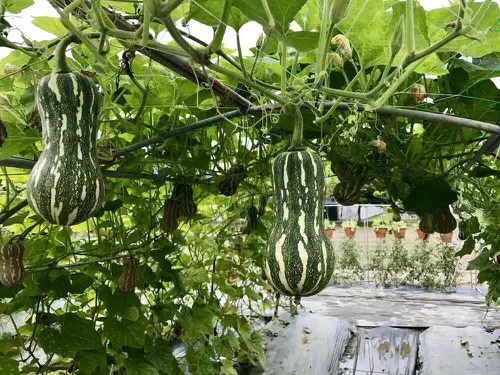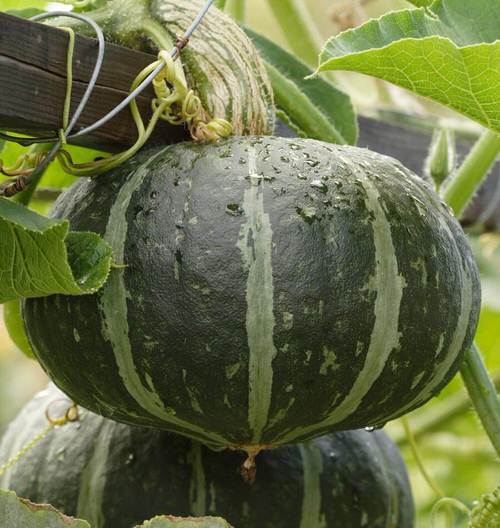Growing Squash Vertically can help you save a ton of space and relish these fruits. Here’s How to Grow Squash on a Trellis!

Growing squash vertically is the best way to improve the yield while saving plenty of space! It’s actually really simple to do if you know the right steps. Don’t worry; we have shared them below!
Why You Must Grow Squash Vertically?
Squash plants are vigorous growers that can quickly dominate your garden. By training them vertically on a trellis, you can optimize your space and prevent overcrowding.
But that’s not the only benefit of vertically grown squash plants. It improves air circulation, reducing the risk of fungal diseases like powdery mildew. Plus, keeping the fruit off the ground protects it from rot and pests, ensuring a bountiful and healthy harvest.
As the plant grows vertically, the leaves can get proper sunlight exposure (more than 6 hours a day), and you’ll get bigger and tastier squashes.
Best Varieties of Squash to Grow Vertically

Avoid growing squashes that get heavy, like the butternut squash, as they will weigh down the entire plant. Smaller varieties like acorn and butterfly F1 are more manageable.
Summer squash varieties are generally ideal for vertical growth due to their smaller fruit size and less vigorous vines. Zucchini, pattypan, and scallop squash are also excellent choices. Their compact nature and rapid growth make them well-suited for trellis systems.
Tromboncino and Chayote squashes also thrive vertically; they also have interesting shapes and flavors.
How to Grow Squash Vertically?

Growing squash vertically is really easy because there are not many things to do. Only two areas need your attention—the spot and the support.
1. Selecting the Right Spot
Sunlight is essential for robust squash growth. While these plants can tolerate some shade, they thrive in locations that bask in ample sunlight. Select a spot in your garden that receives generous, direct sunlight throughout most of the day. Avoid areas that are perpetually shaded, as this can hinder flowering and fruit production.
2. Choosing the Proper Support
Once your squash seedlings have reached a height of approximately 4 to 8 inches, it’s time to introduce support. A variety of materials can be used as trellises, including obelisks, tomato cages, bamboo poles, or even sturdy branches.
Secure your chosen support structure firmly into the ground to prevent toppling as the squash plants mature and bear fruit. You can also make a trellis on your own. These DIY squash trellis ideas will help you!
Taking Care of Squash Vertically

1. Mulching
Mulching your squash plants offers several advantages. A layer of organic material, such as compost or straw, placed around the base of the plants helps to suppress weed growth, which can compete for nutrients and moisture. Additionally, mulch acts as a natural insulator, helping to retain soil moisture and protect against temperature fluctuations. Why don’t you use pine needles for this?
2. Pruning
While it may be tempting to prune your squash vines to control their growth, it’s generally not recommended. Excessive pruning can reduce fruit production by removing potential fruiting sites. Instead of pruning, focus on providing adequate support for your vines, such as a trellis or strong stakes. This will help prevent the plants from sprawling and becoming tangled.
3. Watering
Squash plants thrive with consistent moisture, so regular watering is essential. Allow the top inch of soil to dry out slightly between waterings to prevent waterlogging, which can lead to root rot.
Providing ample water, especially during flowering and fruit set, promotes larger and more abundant squash yields.
And there you have it! You’re now an expert on growing squashes on a trellis vertically. Give it a try, and let us know your experience in the comments!


